Is February a good time to visit the Galapagos Islands?
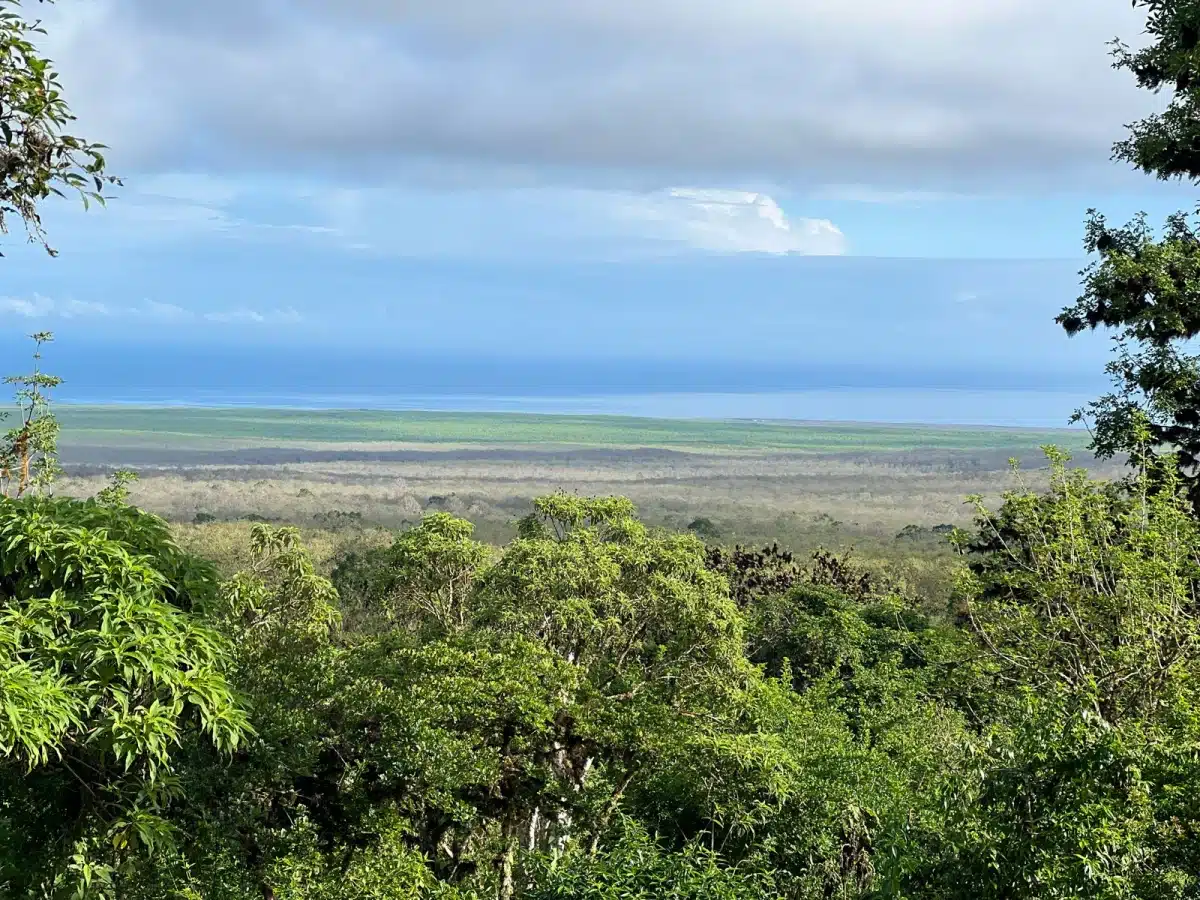
The view of the Galapagos National Park and Pacific Ocean from Galapagos Safari Camp (taken in February)
February in the Galapagos Islands marks a vibrant period where the Warm and Wet Season brings the archipelago to life. With flowers blossoming and numerous land species engaging in nesting and mating rituals, the islands become a hub of natural activity.
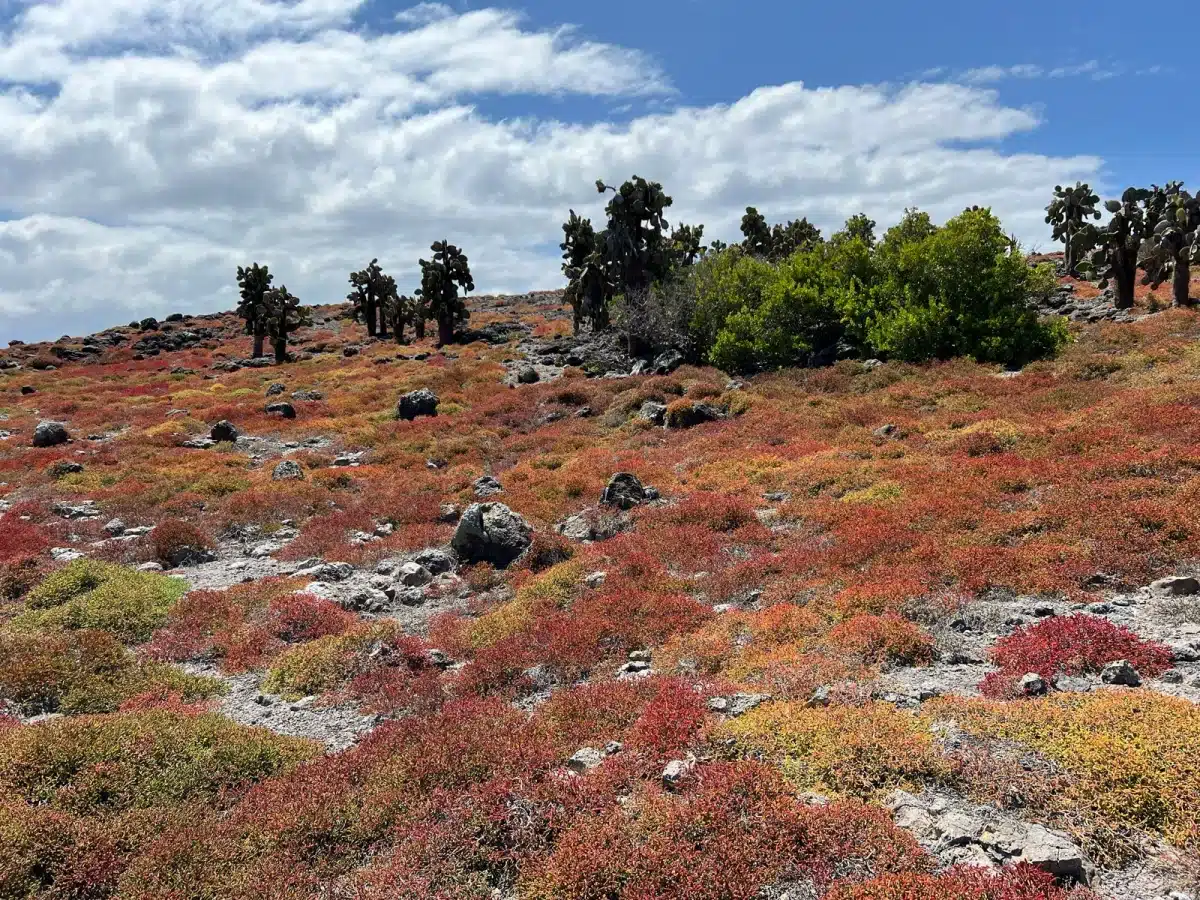
The spectacular sesuvium carpet on South Plaza Island, taken on a Safari visit in February
In this post we highlight what you can expect if visiting the Galapagos Islands in February, offering insights into the weather, wildlife, and Safari experiences at Galapagos Safari Camp.
Photos from February
All the photos in this article were taken during the month of February, either at Galapagos Safari Camp or on one of our Safaris.
Galapagos in February: At a glance
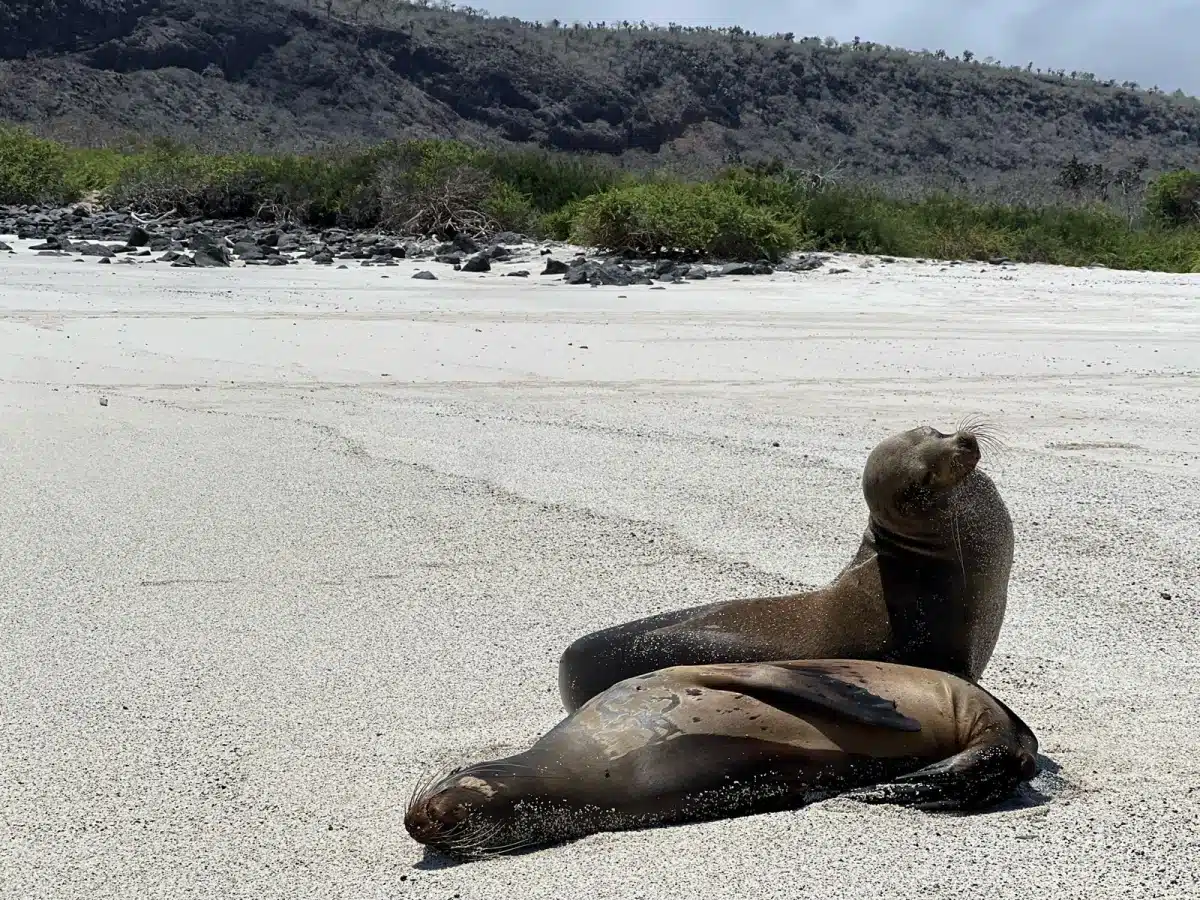
Sea lions basking on Santa Fe Island
- Warm & Wet Season
- Lush, green vegetation
- Mating season for many animals
- Air temperature: 22-31°C / 71-88°F
- Sea temperature: 74-76°C / 23-24°C
- Average rainfall: 2-5cm / 0.75-2in
- Clear skies: 4-7 hours
- Intermittent rain showers
- Wind force: 1-4
- Underwater visibility: approx 10-30m
What is the weather like in February
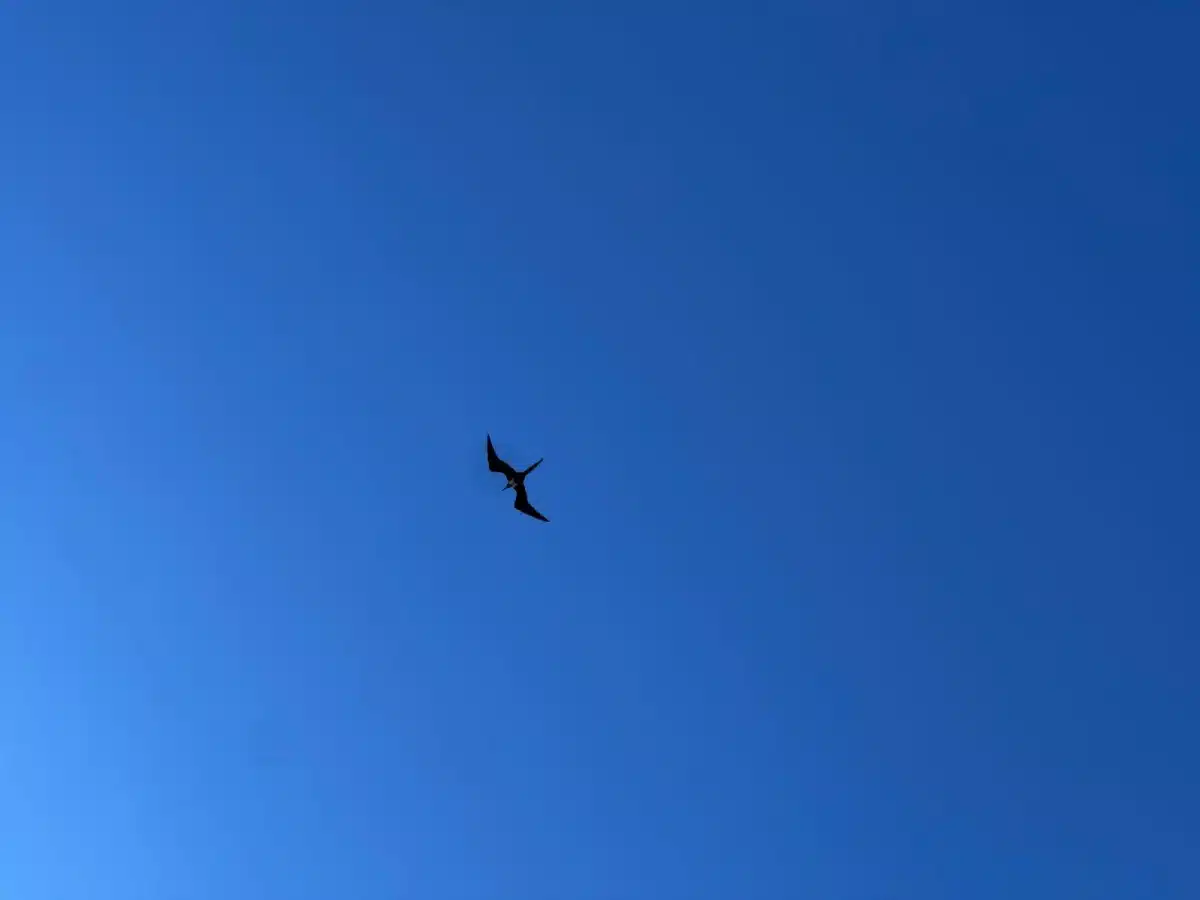
Sunny skies and soaring frigatebirds
Good for sun-seekers
February’s climate is perfect for those chasing the sun, featuring warm days with temperatures between 22-31°C (71-88°F) and sea temperatures ideal for snorkeling at 23-24°C (74-76°F).
Short rain showers
Although brief rain showers are common, they give way to extended periods of clear skies.

A barn owl takes shelter from the rain in our main lodge
The calm seas, enhanced by the easing southern trade winds, make for smoother boat journeys and excellent underwater visibility for snorkeling and kayaking adventures.
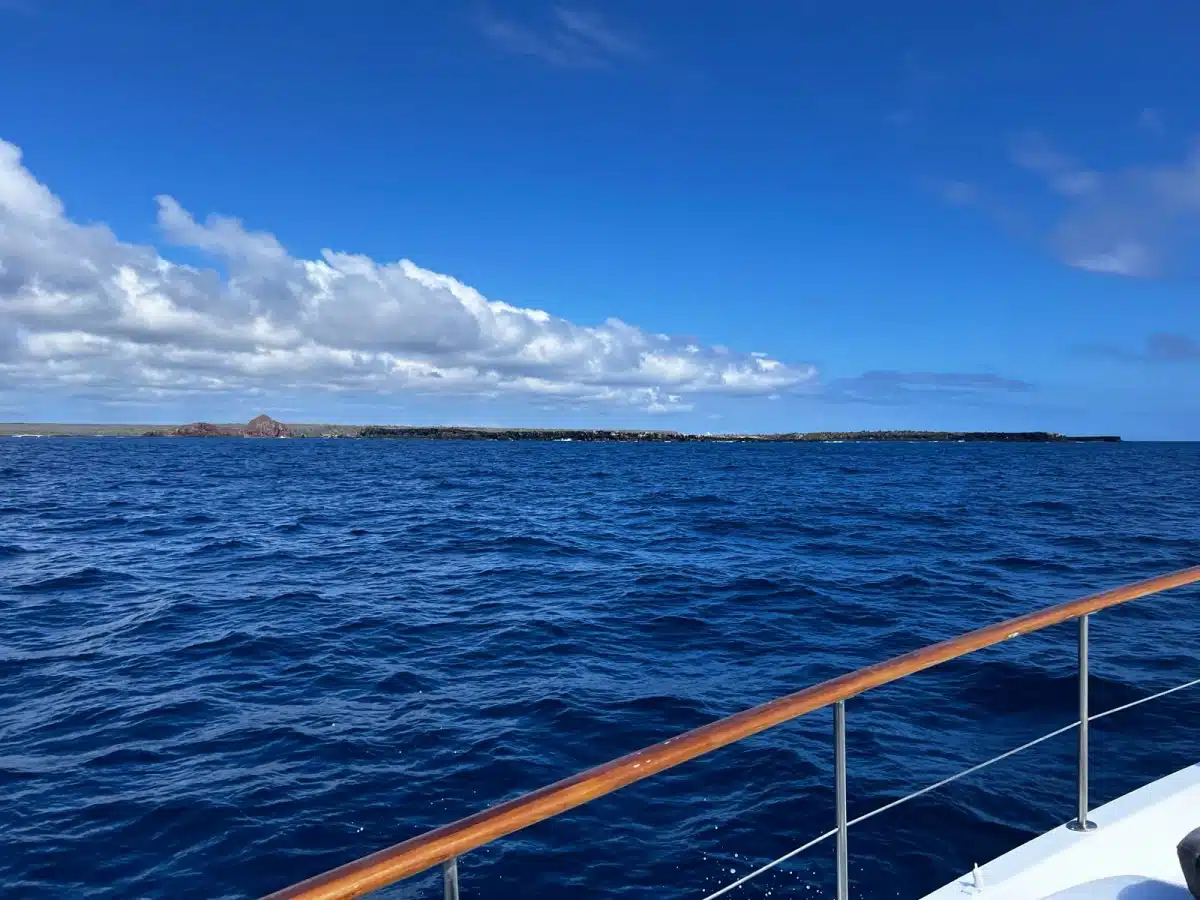
This season brings calmer seas and smoother boat navigations
What wildlife will I see in February
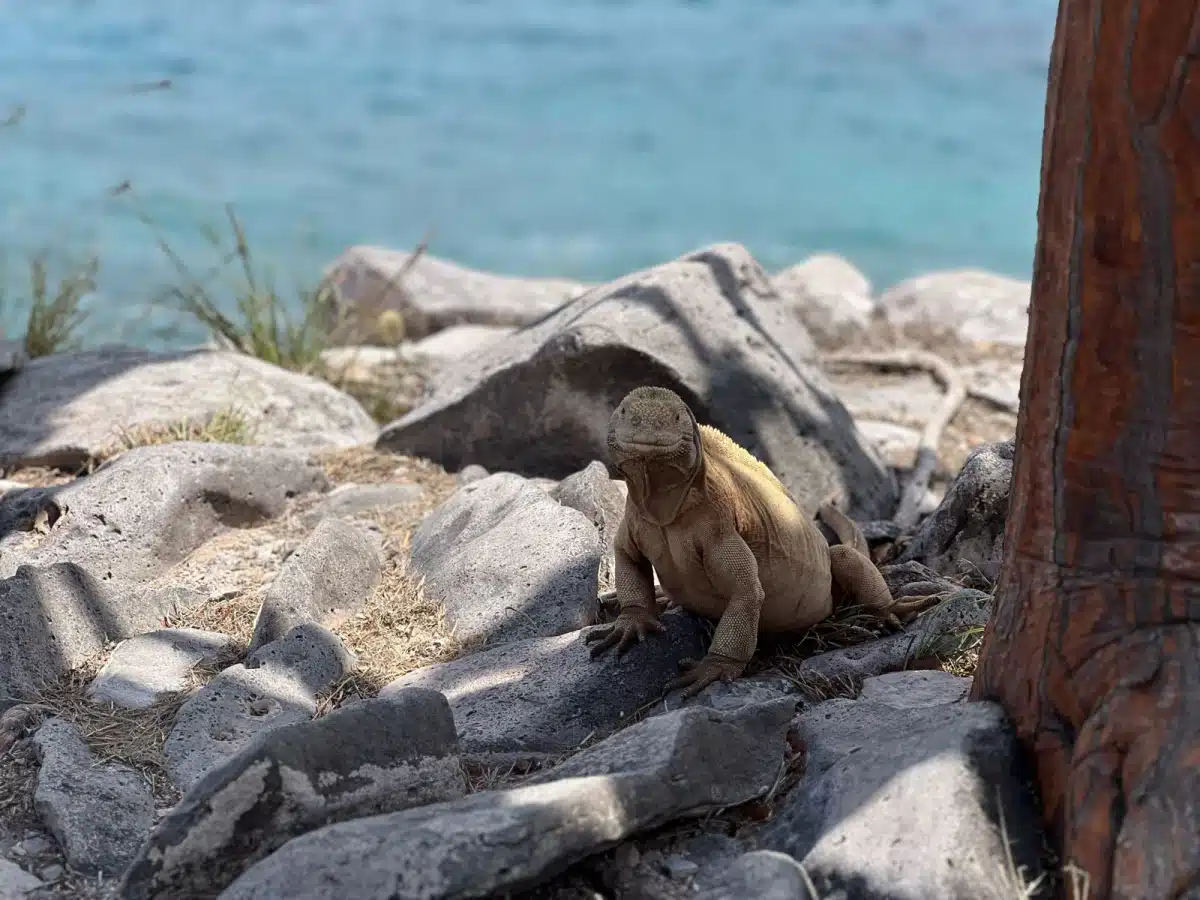
Land iguanas can show territorial tendencies at this time of year
The warm & wet season is a celebration of new beginnings for the creatures of the Galapagos Islands. Many species of birds, iguanas, turtles, and giant tortoises are starting to breed. This flurry of mating activity makes for some interesting wildlife encounters.
- Green sea turtles start laying their eggs
- Land birds begin nesting and courtship rituals
- Galapagos sea lions come out to play!

Sea lions basking on Santa Fe Island
- Marine iguanas and land iguanas start their mating season.
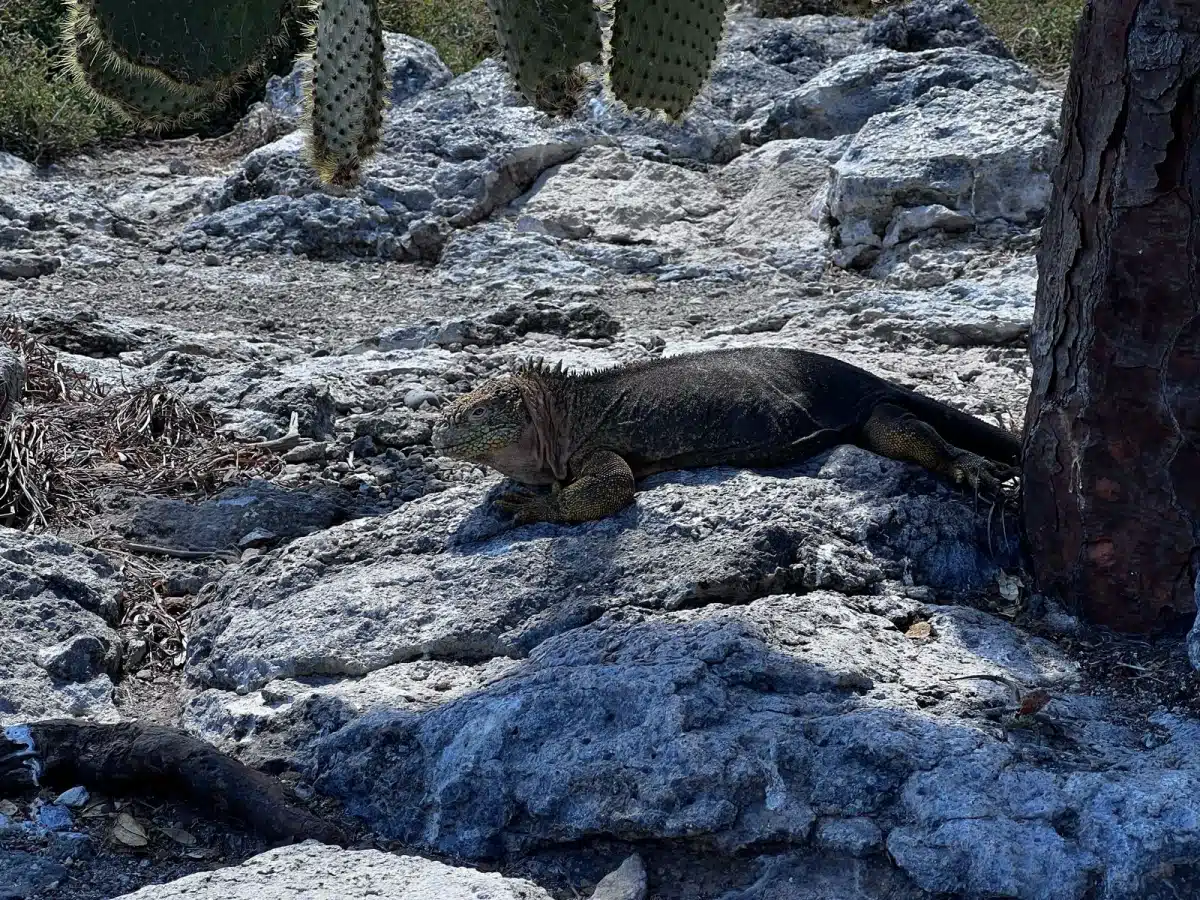
Galapagos land iguana
- Galapagos giant tortoises are frequently seen at camp
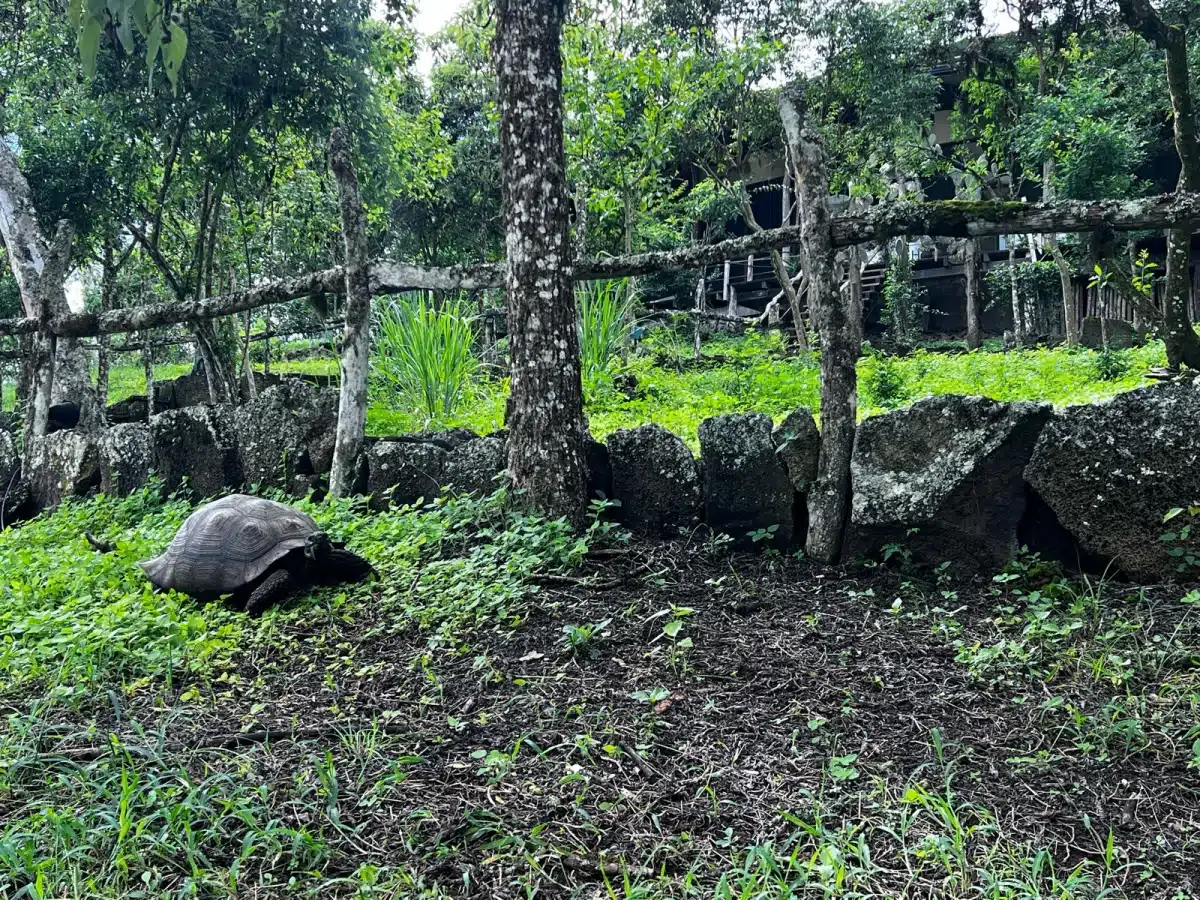
A giant tortoise pauses outside our main lodge
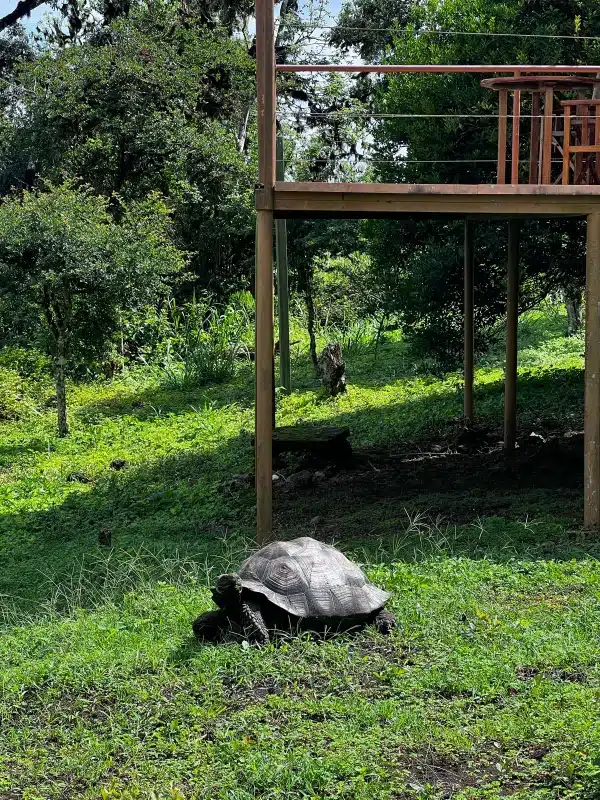
Giant tortoises are often seen grazing under our Safari tents
Other species:
Species frequently spotted on our Safaris during February include:
- Blue-footed booby
- Brown pelican
- Frigatebird
- Galapagos Dove
- Galapagos Finch
- Galapagos Mockingbird
- Galapagos Penguin
Galapagos Safari Camp in February
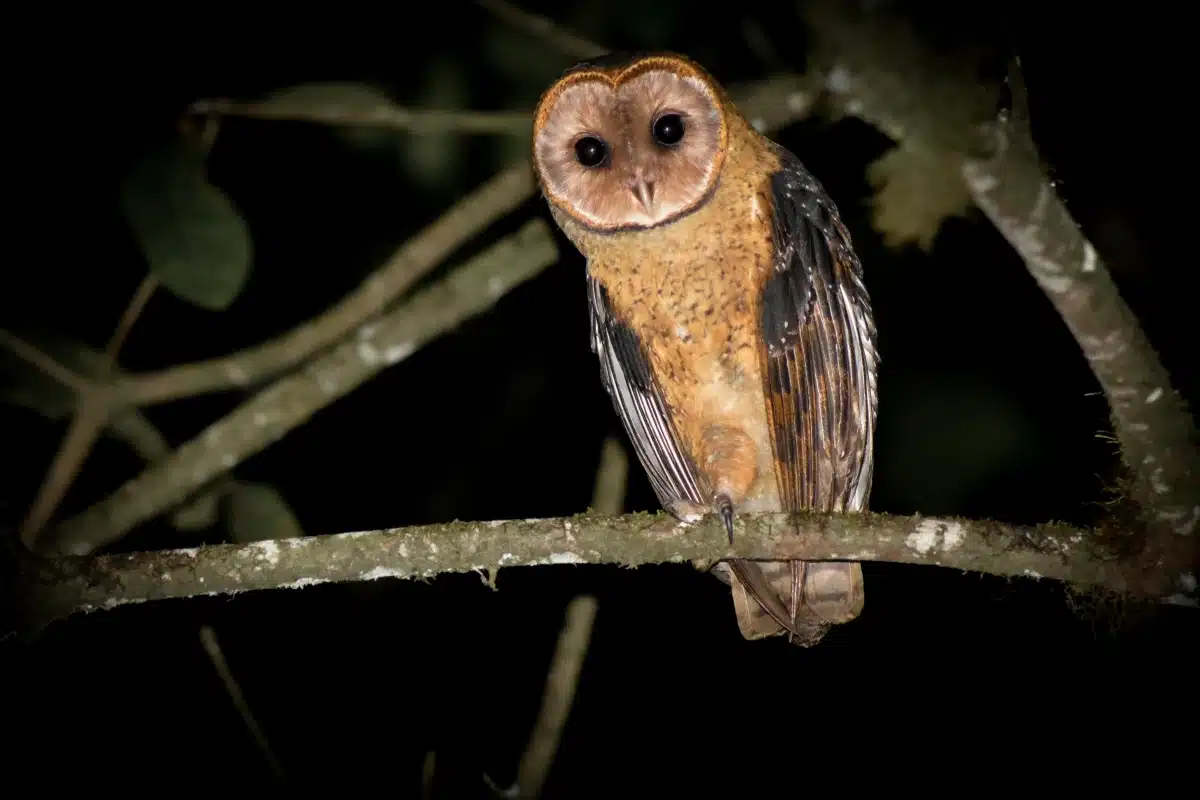
“Saint Peter” – the keeper of the keys at Galapagos Safari Camp!
During this season, moisture in the air increases, especially along the shorelines. Nestled in the elevated terrains of Santa Cruz, Galapagos Safari Camp enjoys the advantage of cooler evenings and nights. This allows guests to dine in comfort outside and to sleep comfortably without the need for air conditioning.
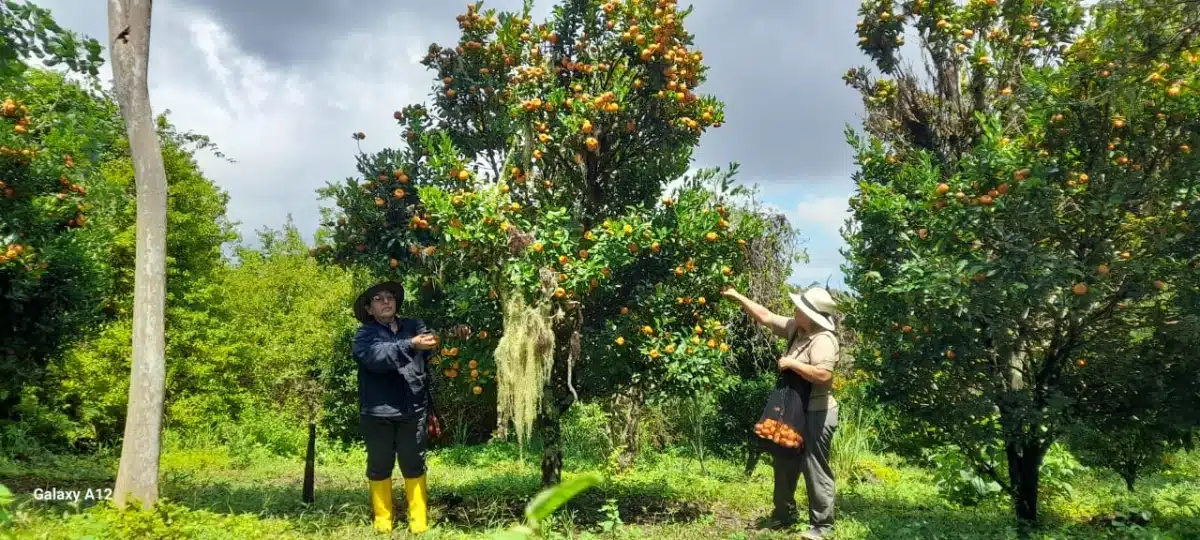
Harvesting mandarins for breakfast jams and juice at Galapagos Safari Camp
Sunsets are also impressive during this period. Indulge in your preferred drink and watch the sun dip below the horizon of the national park and the remote islands, marking a serene close to your day.
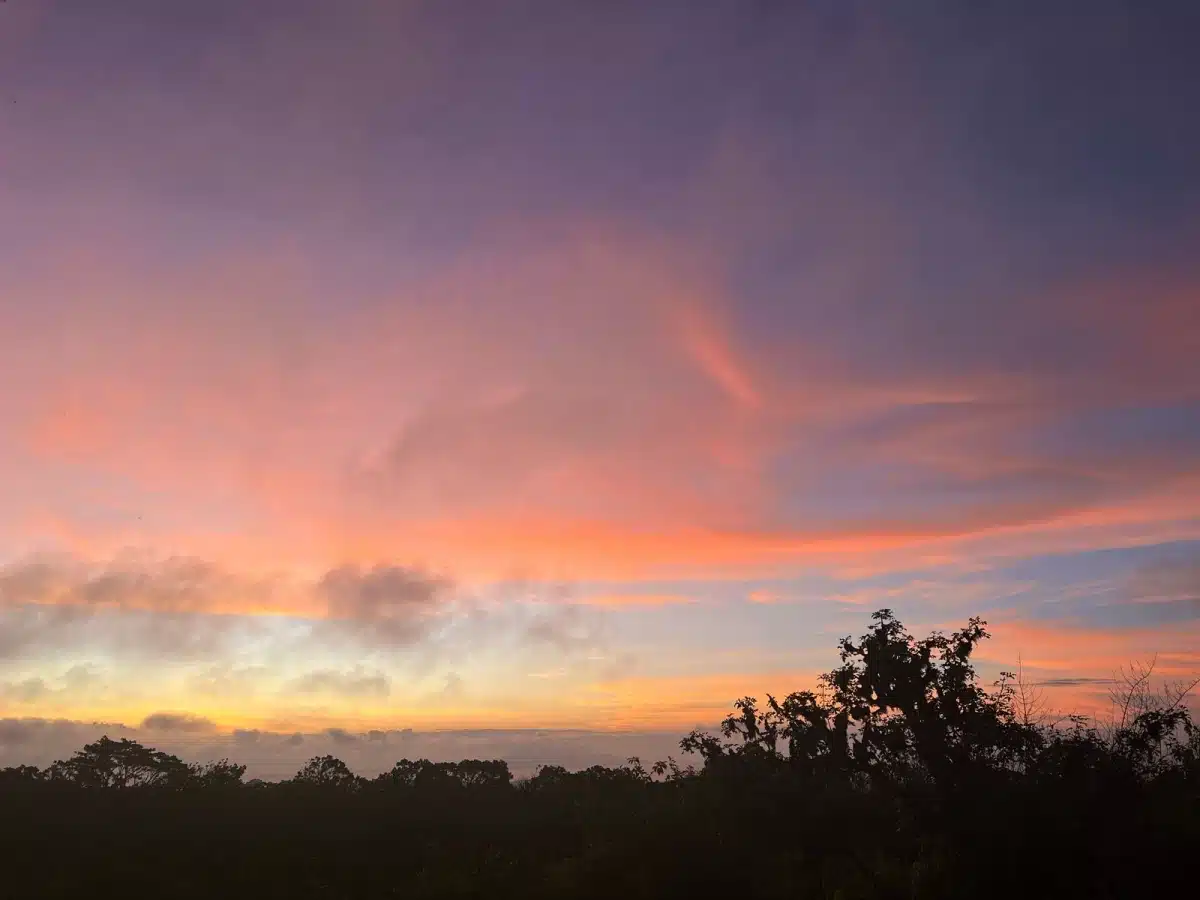
February sunsets at Galapagos Safari Camp
Summary
The Warm & Wet Season (Dec/January to June/July) is well underway now, and February is an ideal month for sun seekers to visit the Galapagos Islands. Although daily rain showers are to be expected, they are usually short and followed by long periods of clear, blue, sunny skies.
For more information on the weather and wildlife in the Galapagos, please visit When to visit the Galapagos Islands.
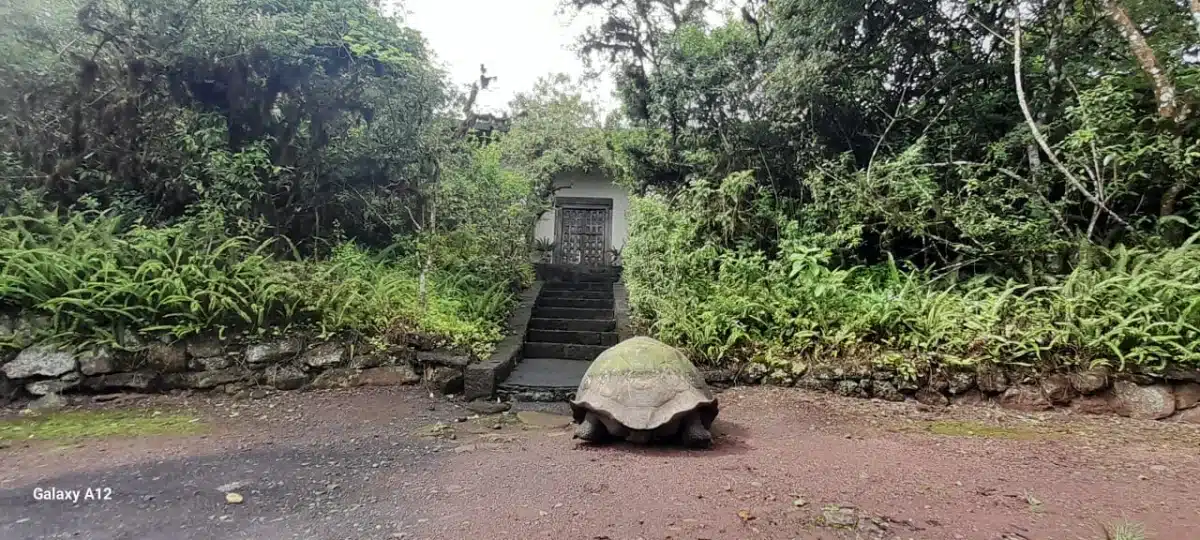
February Reviews of Galapagos Safari Camp
Collected from feedback forms:
“Excellent! Exceeded expectation. Not only was the staff very attentive and friendly but they fulfilled needs we didn’t know we had. The location and facilities are amazing, with excellent service. Food was outstanding. Brava to Daisy!! Would love to return with friends. Love it here, hard to leave”
“We have truly had a trip of a lifetime. Thank you so much. A haven for relaxation. Loved every minute. Amazing team and service! [Name of guide] is the best guide we have ever had. We loved all the activities, especially the water related ones”
“A very nice hospitable team with a superb kitchen!”
“We felt pampered and made as comfortable as possible. Alejandro helped us in every possible way to maximise our enjoyment. It surpassed our expectations”
“Food was exquisite and very delicious”
“Magical experience. Thank you very much, especially in accommodating with children’s activities in the off season”
“Amazing staff, great flexibility with scheduling, ease of airport procedures super helpful. [Name of guide] is so knowledgeable – one of the best guides anywhere. Also she is very sensitive to our needs, which is helpful with a child around”
“The food was spectacular. Appreciated the attention to details and textures. Better than some of the finest restaurants we’ve eaten at. Our family enjoyed the meals immensely. The property is amazing, as was service. Really appreciate the ‘invisible’ housekeeping service where everything was done either while out or at dinner. [Name of guide and driver] were both amazing, very courteous and attentive.”
“the menus were amazing! We loved everything about our stay! Everyone was so friendly and helpful. Gracias por todo!”
Tripadvisor and Google Reviews of Galapagos Safari Camp
For more testimonials, see our reviews on Tripadvisor (you can filter them for ‘time of year’) and also on Google.
“To elevate this once in a lifetime journey, one should experience it through the personalized guidance of the Galapagos Safari camp (GSC) team.” Read full review on Google.
